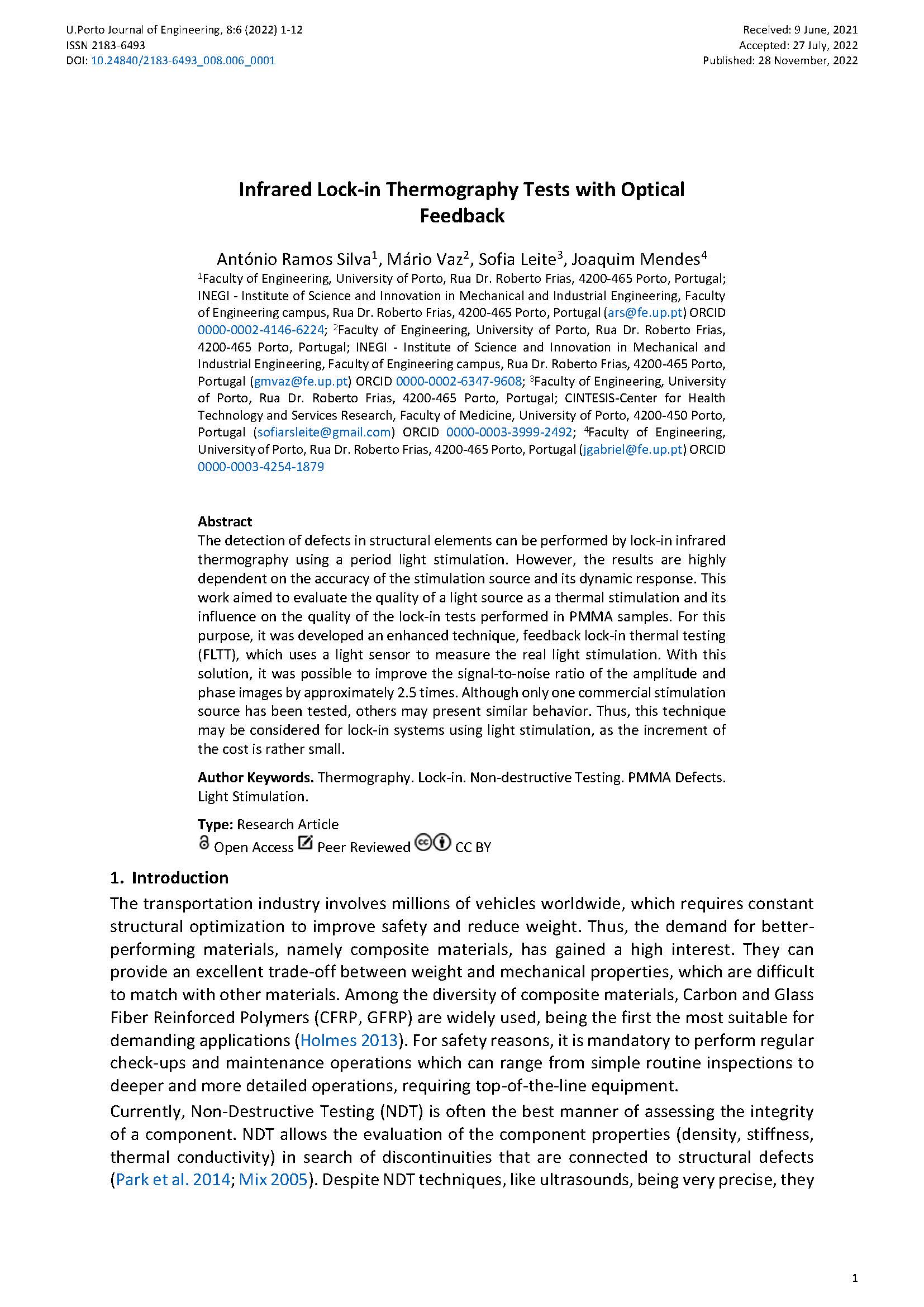Infrared Lock-in Thermography Tests with Optical Feedback
Main Article Content
Abstract
Thermography using a period light stimulation. However, the results are highly dependent on the accuracy of the stimulation source and its dynamic response. This work aimed to evaluate the quality of a light source as a thermal stimulation and its influence on the quality of the lock-in tests performed in PMMA samples. For this purpose, it was developed an enhanced technique, feedback lock-in thermal testing (FLTT), which uses a light sensor to measure the real light stimulation. With this solution, it was possible to improve the signal-to-noise ratio of the amplitude and phase images by approximately 2.5 times. Although only one commercial stimulation source has been tested, others may present similar behavior. Thus, this technique may be considered for lock-in systems using light stimulation, as the increment of the cost is rather small.
Downloads
Article Details

This work is licensed under a Creative Commons Attribution 4.0 International License.
Authors who publish with this journal agree to the following terms:
- Authors retain copyright and grant the journal right of first publication with the work simultaneously licensed under a Creative Commons Attribution License that allows others to share the work with an acknowledgement of the work's authorship and initial publication in this journal.
- Authors grant the journal the rights to provide the article in all forms and media so the article can be used on the latest technology even after publication and ensure its long-term preservation.
- Authors are able to enter into separate, additional contractual arrangements for the non-exclusive distribution of the journal's published version of the work (e.g., post it to an institutional repository or publish it in a book), with an acknowledgement of its initial publication in this journal.
- Authors are permitted and encouraged to post their work online (e.g., in institutional repositories or on their website) prior to and during the submission process, as it can lead to productive exchanges, as well as earlier and greater citation of published work (See The Effect of Open Access).

